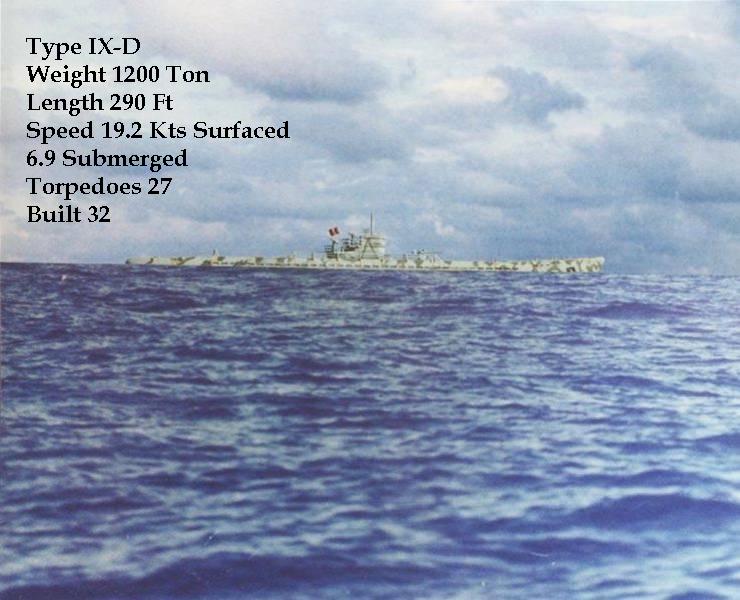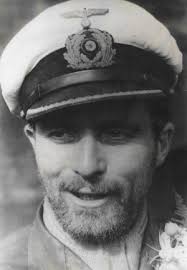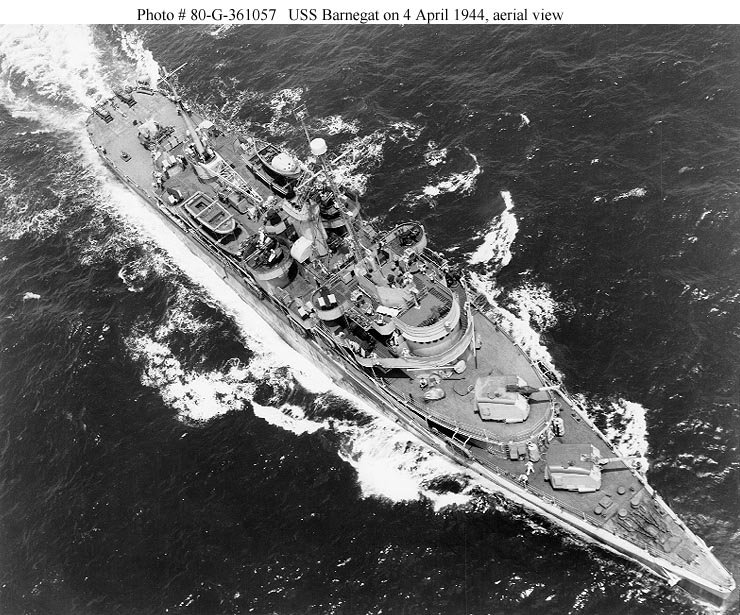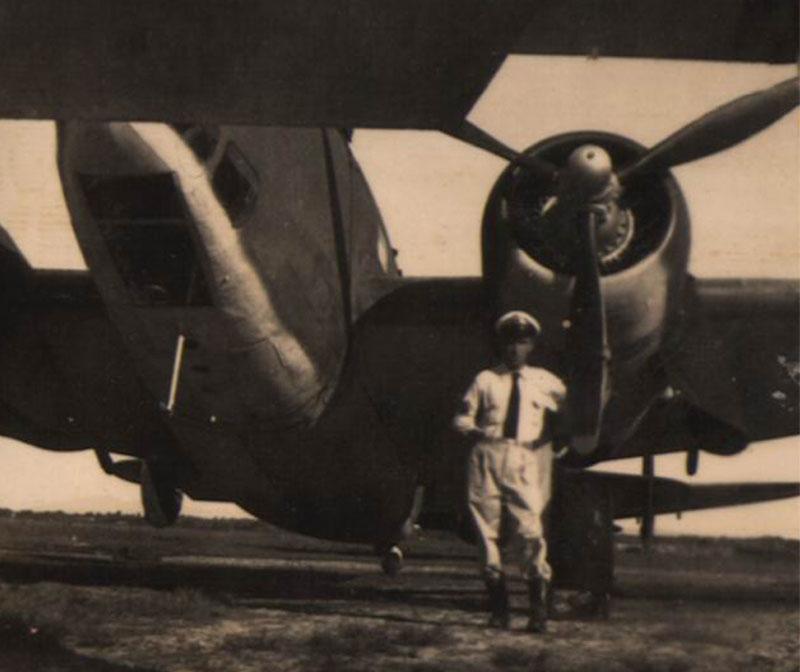

Ordered - 4 Nov 1940
Laid down - 10 Oct 1941 AG Weser, Bremen (werk 1045)
Launched - 10 Jul 1942
Commissioned - 28 Nov 1942 Kptlt. Hans-Werner Kraus (Knights Cross)
Commanders - 28 Nov 1942 - 31 Jul 1943 Kptlt. Hans-Werner Kraus (Knights Cross)
Career
1 patrol 28 Nov 1942 - 30 Apr 1943 4. Flottille (training)
1 May 1943 - 31 Jul 1943 12. Flotille (active service)
Successes - 2 ships sunk, total tonnage 4,181 GRT
Fate: Sunk 31 July 1943 in the South Atlantic east of Rio de Janeiro, Brazil, in position 23.54S, 42.54W, by depth charges from one American Mariner aircraft (VP-74) and two Brazilian aircraft (Catalina and Hudson). 49 dead and 12 survivors.
By www.uboat.net
BRAZILIAN CATALINA SINKS U 199
When the base received a report at 0720 on 31/07/43, Brazilian Air Force Command was immediately notified and advised to dispatch the PBY and a Hudson to the scene. At the same time two additional Mariners plus the BARNEGAT were ordered to proceed. Mariner four, the first
By this time the second Brazilian Hudson arrived over the real scene of action and hurriedly dropped short. At 0900, 1 hour and 42 minutes after the PBM attack, the Brazilian PBY arrived and delivered two attacks on the crippled U/B while Mariner seven drew the U/B's fire.
The first PBY drop was observed to be slightly short off the port quarter but the second exploded directly over the submerged stern of the U/B. The U/B sank in 3 seconds. Unfortunately all film in Mariner seven's camera had been used up on his own attack and no photographs were obtained of the Brazilian attack. Mariner four, who was then still looking for the interesting area, was ordered to take up Mariner seven's barrier sweep. Mariner two, the second PBM, was ordered to relieve number seven who had received three hits in the engine nacelle. Mariner two performed an excellent job of directing the BARNEGAT to the area and aided materially in the rescue of the 12 survivors.
It is difficult to explain how or why the two Brazilian aircraft arrived so promptly over the U/B position when the original position reported was in error by
The pilot of 74-P-7 was not justified in changing the Squadron doctrine in regards of the D/C spacing from 72 to
AN ENEMY AIRCRAFT CRASHES
One night about a week before U-199 was sunk, she was patrolling surfaced in approximately 24º 00" S., 44º 00" W. at about 2100 local time when the sound of an aircraft was heard on the port quarter. Kraus immediately went to the bridge and ordered an increase to full speed with an emergency turn. He also ordered the guns to be manned.The aircraft then fired a number of flares. Before U-199 could bring any of her guns to bear, however, she observed the aircraft to crash into the sea a short distance from her, a loud explosion being heard simultaneously.
U-199 patrolled the scene of the crash for a short time looking for survivors or debris, but found nothing. Survivors were all amazed at this episode. They assumed that the noise of the explosion they heard must have been the aircraft’s own bombs detonating. They could not understand why the aircraft had crashed. (O.N.I. Note: No U.S.N. aircraft was lost in this position about this date. Several U.S. Army photographic reconnaissance aircraft were however shot down in this area about this date.)
PURSUIT OF AN INDEPENDENT.
Following the attack of about 26 July, U-199 continued to patrol off shore, but sighted no suitable targets until the evening of 30 July, when she sighted an independent from periscope depth. The vessel had very short masts and was on course 1300. U-199 did not surface until dark, by which time the target had escaped in the dusk. U-199’s Quartermaster said that he was able to navigate quite satisfactorily by taking sights during the whole period in her operational area. He never once relied on local radio bearings. U-199 was proceeding surfaced on approximate course 300º on the morning of 31 July 1943.
It was Kraus’s intention to make the 100 fathom line and then submerge and lie in wait.An aircraft was sighted some miles away. Prisoners were sure that U-199 had not received a G.S.R. contact. As far as they were aware, the G.S.R. set was not manned at the time.Immediately the sighting was reported, the Quartermaster, who was on watch at the time, gave the order to put the helm hard over to starboard and increase to full speed. This procedure was endorsed by Kraus himself, when he came to the deck a few minutes later.
U-199 was then steering 0900. The Quartermaster’s orders were, however, misunderstood below, where the alarm bells were rung and some of the forward tanks flooded in preparation for a crash dive before the order as given was correctly carried out. (O.N.I. Note: At 0718P, 31 July 1943 PBM7 obtained a radar contact at a distance of
As soon as the aircraft was within range, U-199 opened fire with all her armament. A number of anti-aircraft rounds were fired by the 105-mm. gun.The aircraft returned the fire, scoring several hits on U-199’s
The aircraft dropped six bombs in a beam attack. These all detonated very close to the target, which subsequently appeared unable to submerge and commenced a series of erratic maneuvers, meanwhile emitting a large quantity of oil. The aircraft immediately pressed home a second attack up stern with its remaining two D/C’s, at an altitude of
Despite the punishment she had taken, the U-boat managed to stay surfaced. She was smoking heavily abaft the conning-tower.) As soon as these attacks were over, it was found that U-199 could no longer proceed submerged. She was, moreover, incapable of proceeding at more than very slow speed surfaced. Kraus thereupon determined to close the shore until the water was shallow enough to permit him to lie on the bottom and effect repairs.
He felt convinced that, if he remained surfaced, he would be subjected to further aircraft attacks. He accordingly instructed his quartermaster to take soundings constantly until the depth of the water below the boat’s keel was no more than
Soundings were constantly taken with the echo-sounder. A depth of
ABANDON SHIP.
As soon as the bombs began to fall, Kraus realized that the position was hopeless and ordered his men to abandon ship. Most of the seamen personnel was already on deck. The remainder of the ship’s company made a desperate effort to climb up the Conning Tower hatch. Only one, the quartermaster, escaped. He stated that when he arrived on deck, the water was already as high as the 20-mm. gun. Survivors stated that little or no chlorine gas had been generated.
They believed that the damage had been mostly caused aft.(O.N.I. Note: Survivors were picked up at 1200P by U.S.S. Barnegat. PBM 7 remained in the area during the Brazilian aircraft’s engagements, drawing the U-boat’s A/A fire. It was hit in one engine, but returned to base successfully.) The last signal made by U-199 was that she was sinking in approximate position 23º
U 199 sank only two ships during her mission in south
By Cap. Jerry Mason USN Ret www.uboatarchive.net

KapitanLeutnant Hans Werner Kraus
Brazilian A-28 Hudson seen above. They were employed in convoy protection and patrol duties.

PBM Mariner. The sturdy versatile patrol bomber had an important role for hunting the U-Boats. The aircraft above, Nickel Boat sank U-513 off Santa Catarina state during a routine patrol mission.
.jpg)
Brazilian Air Force PBY-5 Catalina. It was the first brazilian aircraft which sank a German U-boat U-199.

AVP-10 Barnegat. The US Seaplane tender which rescued U-199 survivors.
Photo http://www.navsource.org/archives/09/43/09431006.jpg
Select nao autorizado. You have an error in your SQL syntax; check the manual that corresponds to your MySQL server version for the right syntax to use near 'and a.id <> 1258 order by ordem asc' at line 1
